01 July 2019
Image: Plastic-free life | By Karina Tess
8 Simple Steps to a Plastic-Free Life this July
This month Archiblox are taking the Plastic-Free July challenge and we are calling on our fellow ‘bloxers’ to join the fight against waste too! Plastic Free July is a global movement that helps millions of people be part of the solution to plastic pollution – so we can have cleaner streets, oceans, and beautiful communities.
2019 is the year of sustainable living according to a survey by finder, with 96% of respondents planning on making a lifestyle change to be more eco-friendly. On the top of the list of changes at 54% (10 million Australians) stated they will buy and use less single-use plastic, with generation Y and X leading the charge.
Plastic is everywhere, and it never goes away – every piece ever made still exists somewhere, breaking down into smaller & smaller particles. According to a study by the Ellen MacArthur Foundation, by the year 2050 there will be more plastic in the ocean than fish. This widespread pollution is having devastating effects on our wildlife and communities. 80% of plastic sinks and what is found on the beach is just a small fraction of the problem. The rest is sinking and being eaten by marine life, and is now found at the bottom of the worlds deepest oceans.
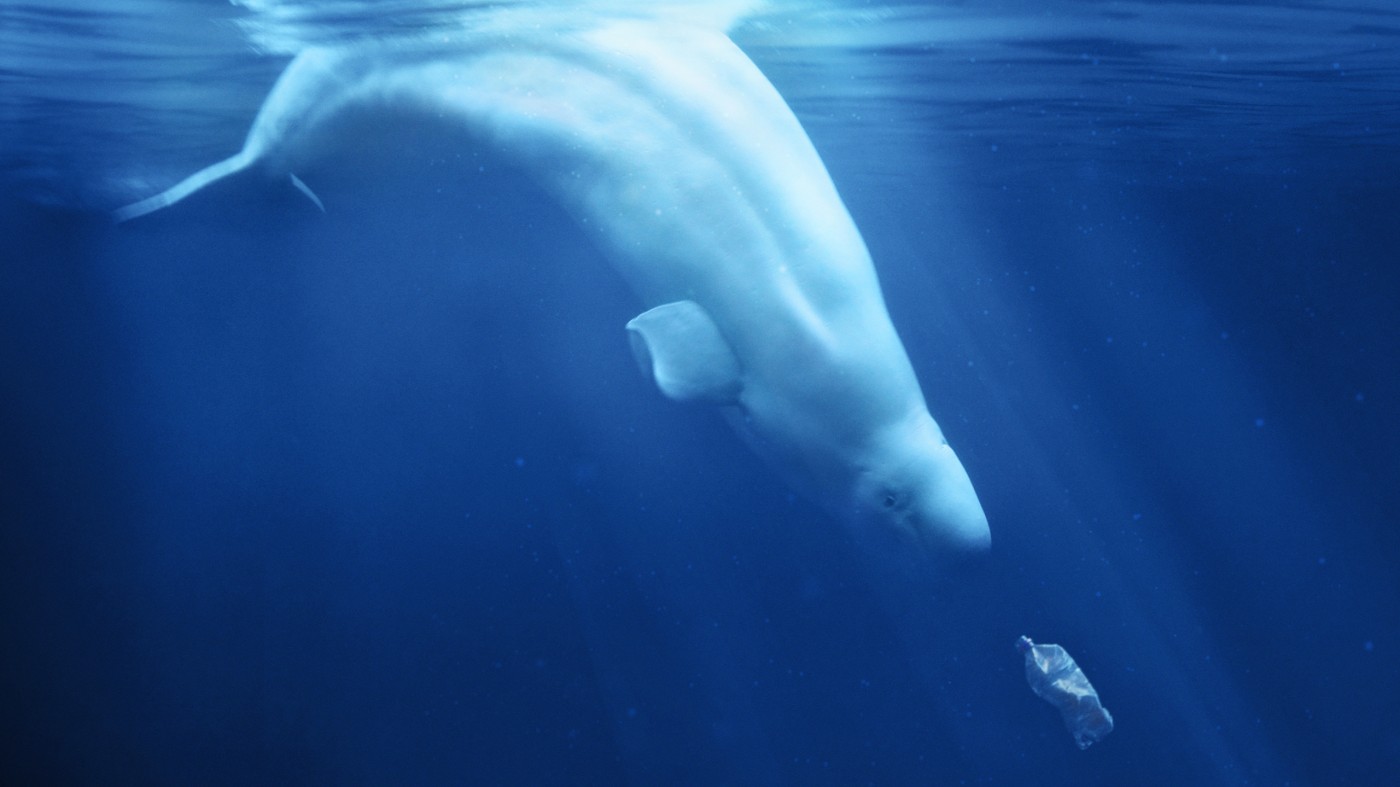
Image: A Plastic Ocean Film | By A Plastic Ocean < < click me to watch
Plastic is made with many potentially harmful toxins, it also accumulates pollutants from ocean water, which is then ingested by wildlife and then us. A new study by the University of Newcastle has found that on average people could be ingesting approximately 5 grams of microplastic every week, which is equivalent to the weight of a credit card.
This man made material comprised of oil, is introducing harmful chemicals into the food chain and choking, entangling and starving our sealife. Humans have made 8.3bn tons of plastic since 1950. Only 9% of the plastic that has ever been disposed is recycled. We all have a responsibility to address our plastic consumption right now, if we don’t want plastic in our bodies and destroying our environment.
Going plastic-free can seem daunting at first when you realise how much of the stuff exists in our lives. With simple alternatives and forward planning changing your buying habits and lifestyle doesn’t have to be hard. Below we have put together a list of 8 steps to ease you into it. They say it takes 30 days to make a habit, so let’s do this!
Interested to know more? Read our blog ‘Zero Waste Life: More Than Cutting Down on Your Rubbish’.
1. Buy non-packaged food.
A good starting point is this. It might mean doing some brainstorming and research, seeing what in your local supermarket that you usually buy in a package is offered without one, etc. but it’s totally worth it if you are trying to reduce the environmental pollution and biodiversity destruction plastic causes.
The first thing you should do – which is also super easy – is to avoid packaging of fruit and other produce. Instead, when walking the produce aisles, pick plastic-free fresh fruits and veggies to place in your basket, and after purchase, pop them into your reusable bags. For some people, this might cause unnecessary headaches at the checkout. To save time, take zero-waste reusable food bags and when shopping the produce aisles pop the veggies directly into your reusable food storage bags.
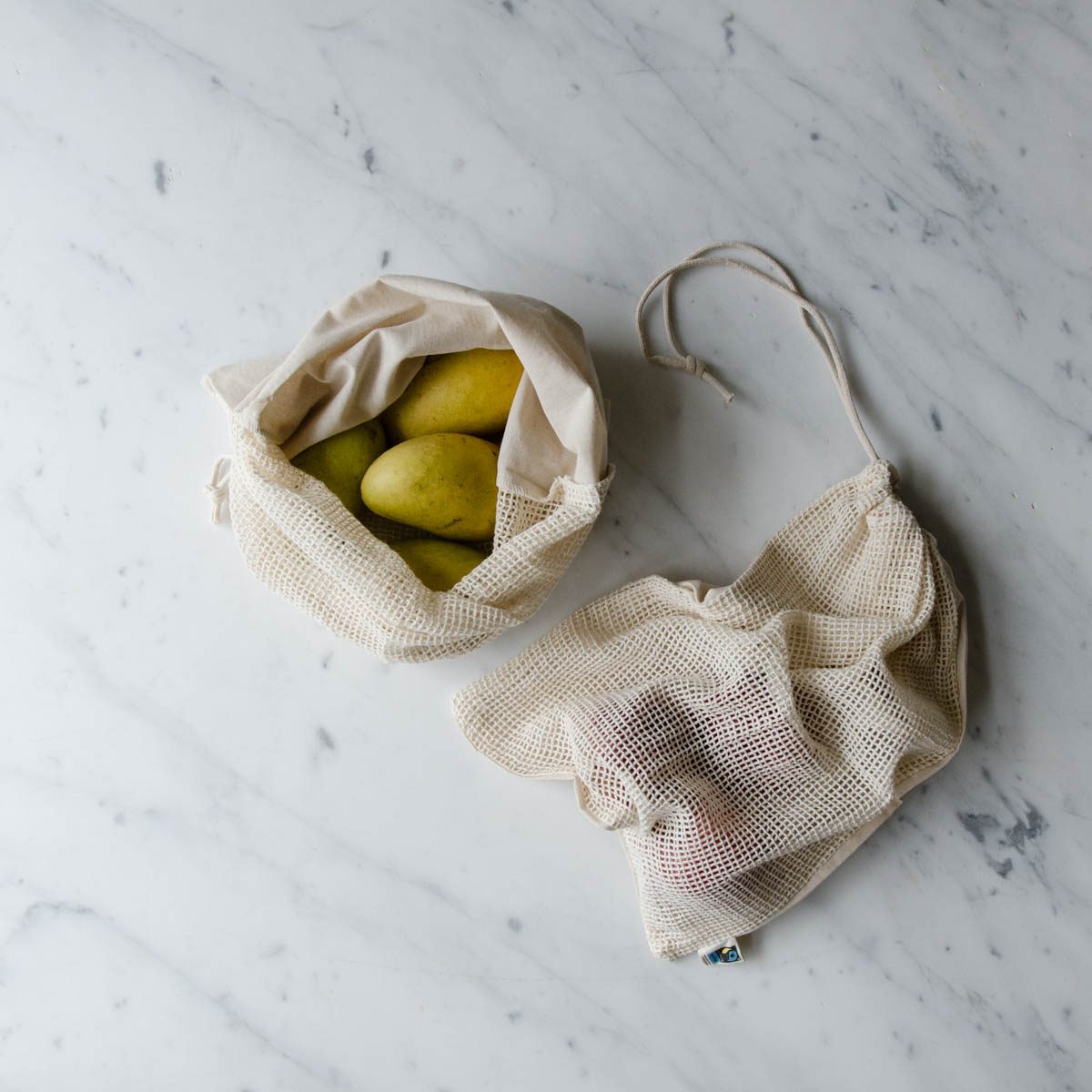
Image: Organic Produce Bags | By June Home Supply
Alternatives
– Plan your meals
– Buy in bulk (online or at a local bulk shop)
– Find your local farmers market
– Join a veggie box club & get your produce delivered
– Grow your own – from window-box herbs to edible gardens.
– BYO tupperware containers (to the butcher, baker, deli…)
– Can’t find what you were looking for? #leaveitontheshelf
2. Say ‘No’ to bottled water.
Did you know that the drinking water that comes in plastic bottles has chemicals in it? and globally, a million plastic bottles are brought every minute!
In fact, German researchers concluded that you’re exposing your body to up to 25,000 chemicals with a single plastic bottle, many of which have never been properly tested to see the impacts on your health. A lot of this is bottled water, which costs
approximately 1000 times more than tap water, is not proven to be any safer.
So, the next time you’re traveling, or if you have the habit of carrying a bottle with you everywhere throughout the day (which is a great way to stay hydrated), switch to reusable ones.
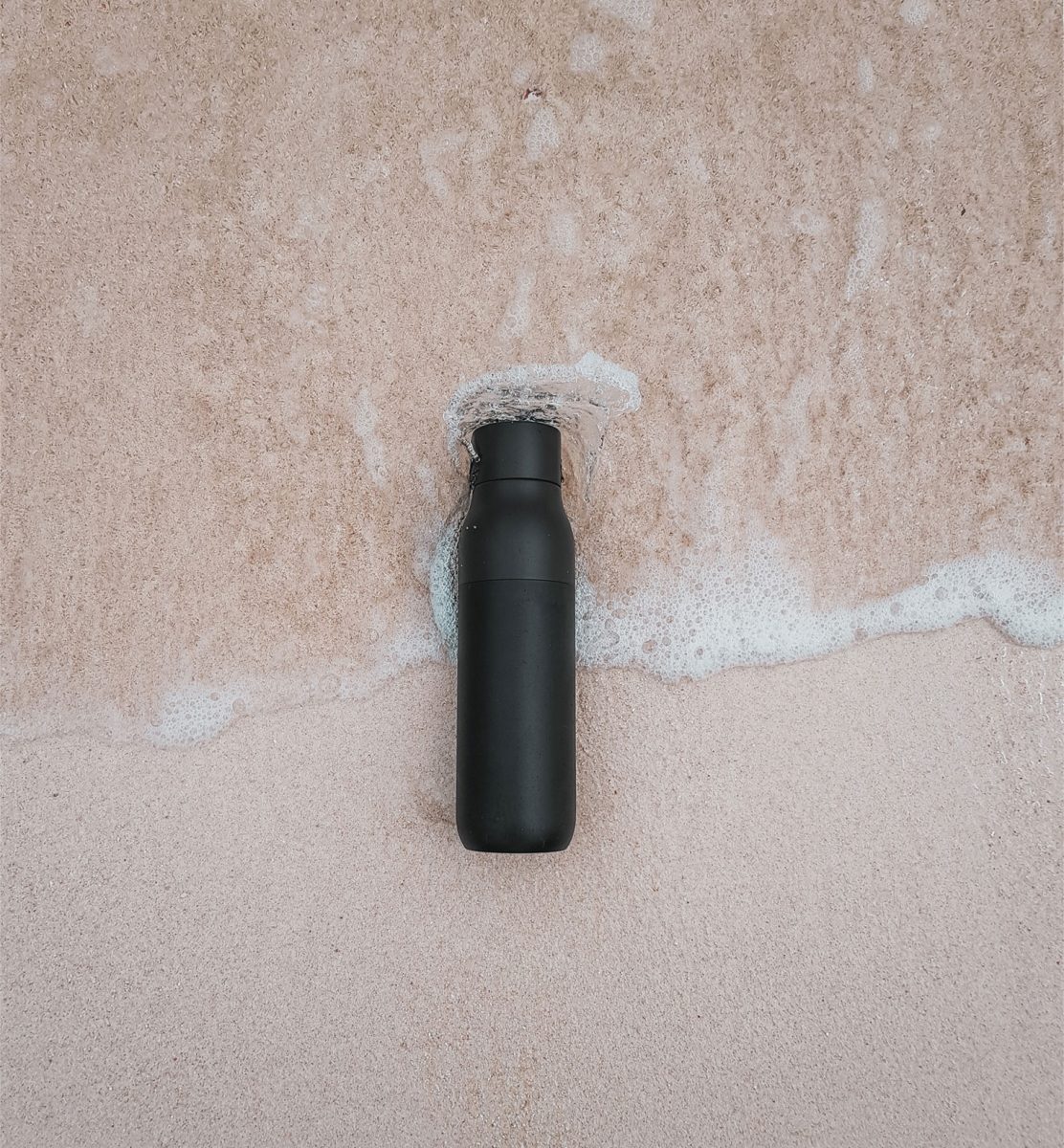
Image: Reusable Water Bottle | By Justin W
Replacements
– Drink tap water
– Get a reusable bottle & bring it with you. Buy a stainless steel bottle, reuse a glass bottle, get a fancy insulated bottle, try
a portable rollable bottle. Anything but single use.
– Like bubbles? Get a Sodastream.
– Support container deposit schemes.
3. Find a better alternative to the plastic bag.
Plastic bags have a negative effect in waterways, wildlife and on soil composition. They might be convenient, the easiest solution, and what we’re used to, but how they influence the environment is a fact we can’t overlook.
It takes 10-20 years for one plastic bag to completely decompose. Not to mention the number of birds and sea animals dying each year as a result of absorbing the chemicals.
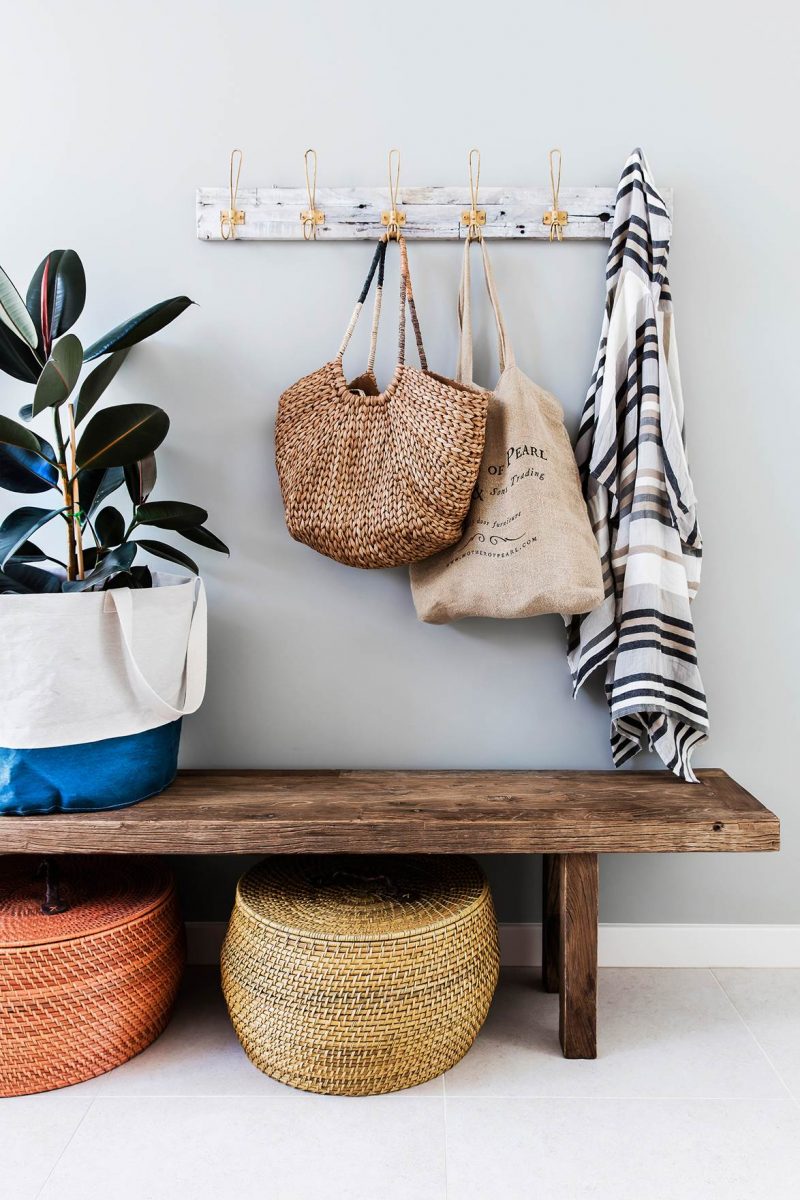
Image: Reusable Bags in Newcastle House Hallway | By Maree Homer
Your very first step should be to avoid them at all costs and get yourself a stylish reusable one.
If you have existing ones in your home, try to recycle them or to reuse them (although their life span isn’t long and there’s only so much a plastic bag can handle). Once you’re completely done with them, say no to them when offered to you at the shops etc. The easiest way to avoid plastic waste is not to let it into your home to start with!
BYO Bag
– Have a lot of bags. Everywhere.
– Put them where you’ll use them.
– Put them back after you use them.
– Get tiny bags that fit in your pocket / bag easily and keep them on you all the time..
– Set an iphone location reminder that tells you to bring your bags when you arrive at your local supermarket.
– If you forget, don’t beat yourself up. It’s hard to start off with. You’ll forget bags, spill lid-less coffees and accidentally get served straws.
4. Use natural cosmetics.
If you’re often buying face wash, hand cream, toothpaste etc. know that these too have elements that turn into micro plastic which in turn pollute the oceans. Not to mention the additives inside these items that aren’t good for your skin or body.
If you’re willing to invest some time in living a more organic and green life, learn how create your own beauty products and do it all yourself. Yes, it’s not that hard to make your own toothpaste, or use natural ingredients to take care of your face, skin, hair, hands, armpits or anything else!
As for shampoo and conditioner, you can switch to coconut oil and natural soaps.
Video: Zero Waste Deodorant How To | By Trash is for Tossers < < click me to watch more
5. Don’t use plastic when storing food.
Another thing the average person does is relying on plastic zipper bags or ziplock bags, plastic lunch boxes, plastic takeout and more.
Here are the alternatives: use glass containers for keeping food in your fridge, go for a paper box when getting a takeaway or better yet bring your own container when you want to bring leftovers home after eating out.
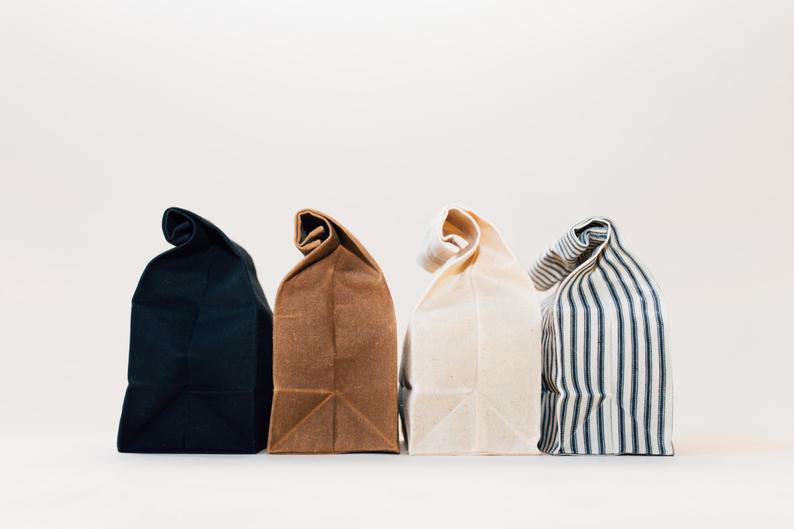
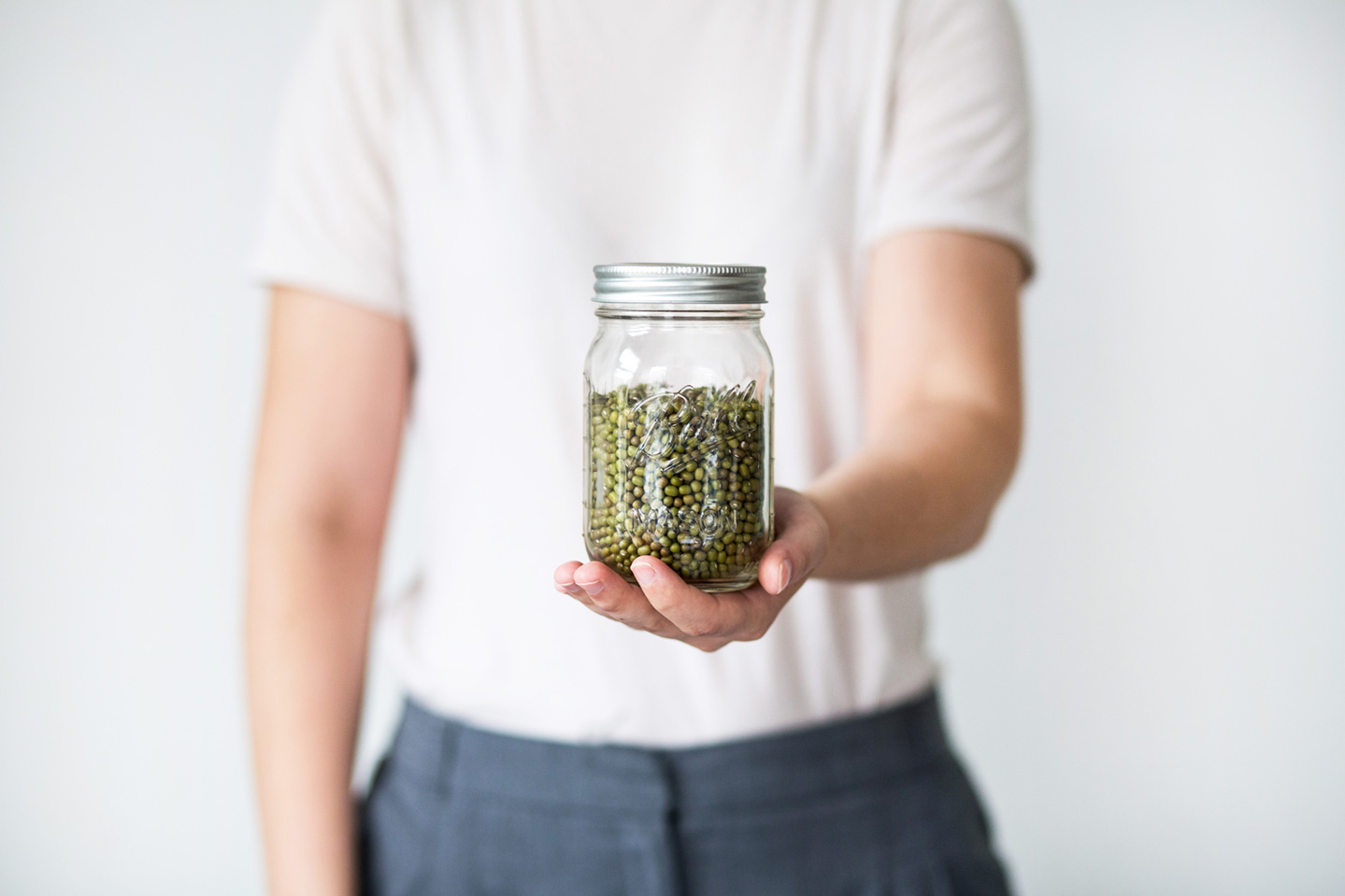
Image: Waxed Bags | By WAAMIndustries
Image: Plastic Free Storage | By Laura Mitulla
There are many things you can do and it’s important to build this as a habit. It might mean asking people what else they have other than plastic containers prior to making a purchase. It might seem odd at first or even time consuming, but our wasteful lifestyles are built on convenience and to counter this, we must be mindful and take some time to think before we consume!
It might mean carrying containers and other reusable items when going out, but this is how the only way to get rid of plastic once and for all if you’re serious about living a greener life.
6. Let vinegar do your cleaning!
It’s surprising what white vinegar has the power to do at home, and especially in the kitchen. You can use it to polish your silverware or even create a homemade cleaning spray that you can use on any surface. If you scrub stains on clothes with a toothbrush and vinegar, they will go away. Another way to make use of it is to unclog the sink, or to even disinfect every corner of your home naturally and for free.
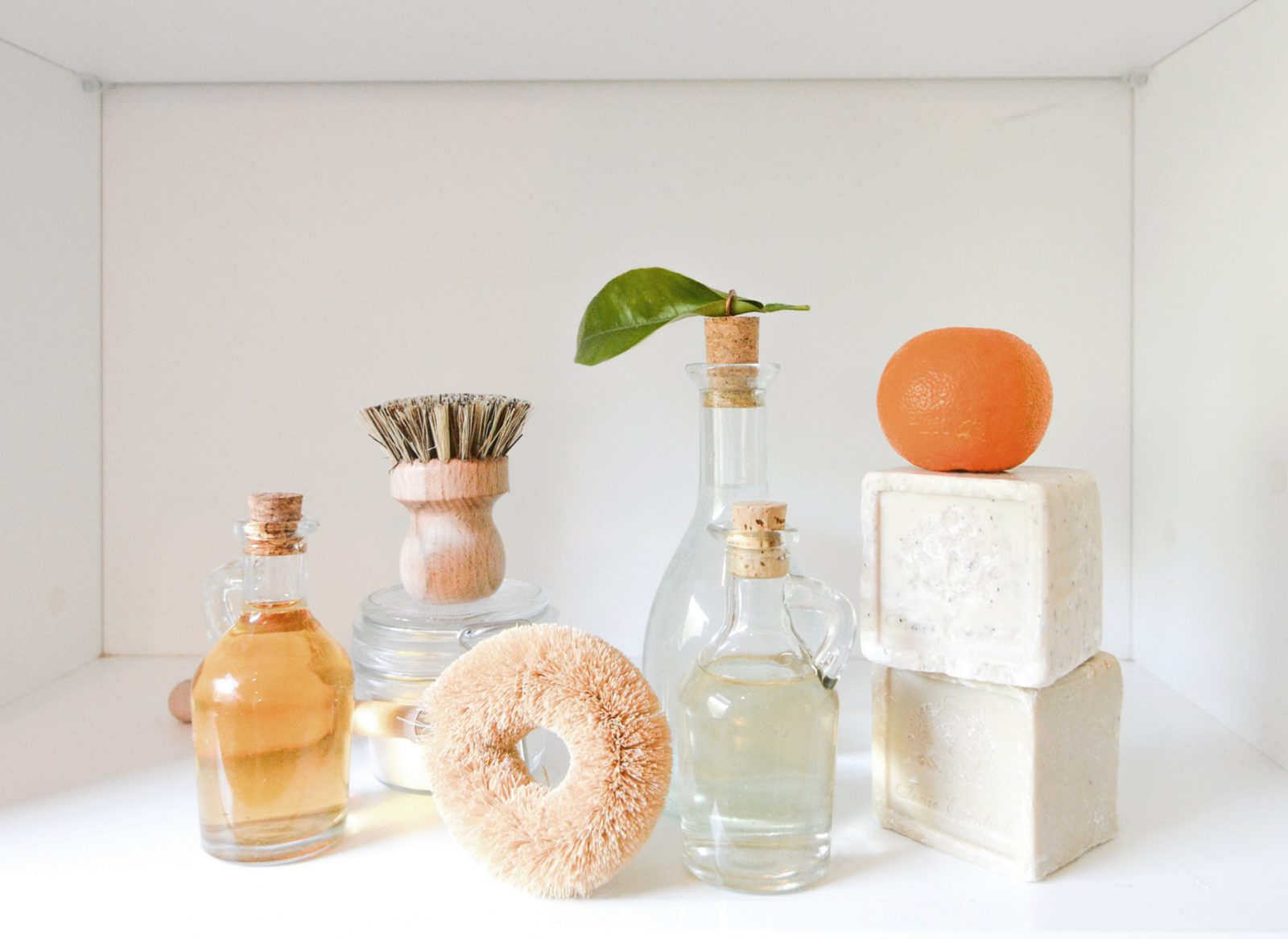
Image: Homemade Cleaners | By Nefeli Kavvada
7. Make your kids’ life plastic-free too.
There are many solutions to leaving the plastic behind and allowing your babies and toddlers to enjoy the same comfort.
Start by choosing cloth diapers, glass bottles with a silicon sleeve and plastic-free toys.
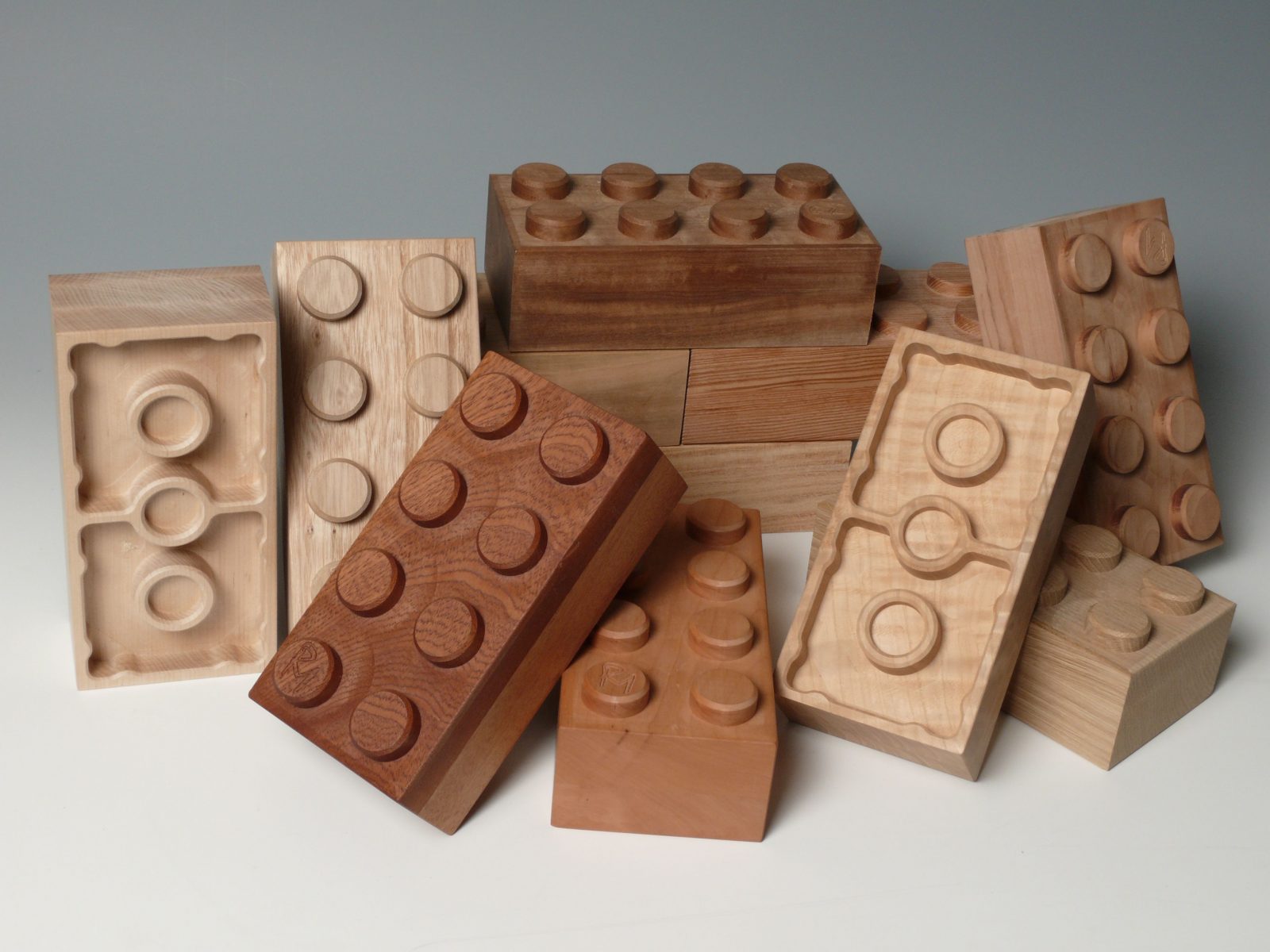
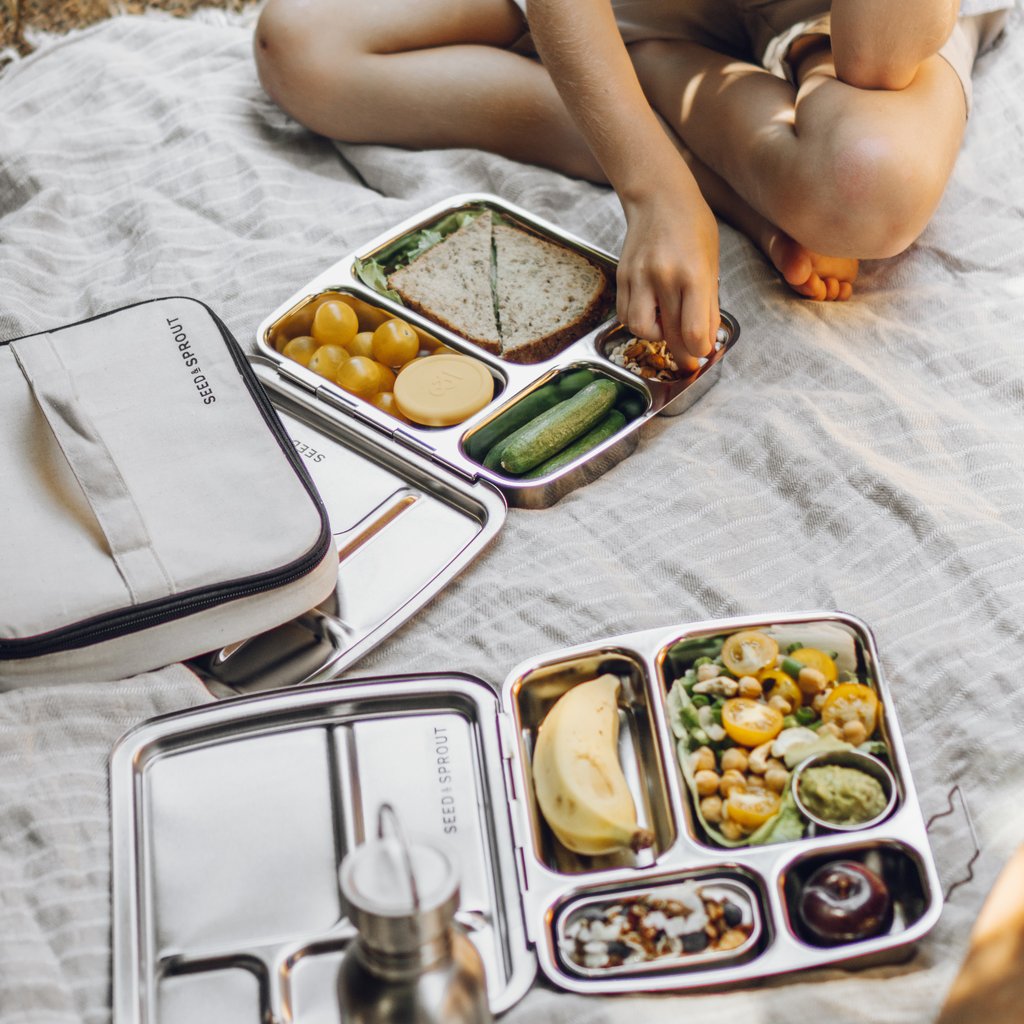
Image: Wooden Lego | By Cidi Toys
Image: Lunchbox | By Seed & Sprout
When the kids grow up and you organize parties, or go out and spend some time in nature, be prepared with stainless steel containers, metal cups and reusable glass bottles.
8. Refuse takeaway coffee cups & straws
Did you know that your takeaway coffee cup actually has a plastic lining? Whether it’s a ‘Biocup’ or a regular convenient cup, that plastic lining means that the cup is not recyclable, and won’t ever biodegrade.
Australians love their coffee, and who doesn’t? but we use about a billion coffee cups a year (that’s almost 3 million a day). And that’s nothing compared to the USA, who annually throw away over 25 billion! All these cups (not to mention the lids) are used for approximately ten minutes.Then they last forever.
Want some chemicals in your chai or coffee? Bisphenol A (BPA) for example is a plastic additive often used in coffee cup linings, lids, and other food packaging. It has been linked to cancer, hormone disruption, abnormal penile development, neurobehavioral problems (e.g. ADHD), obesity, diabetes, and can be harmful even at low doses.
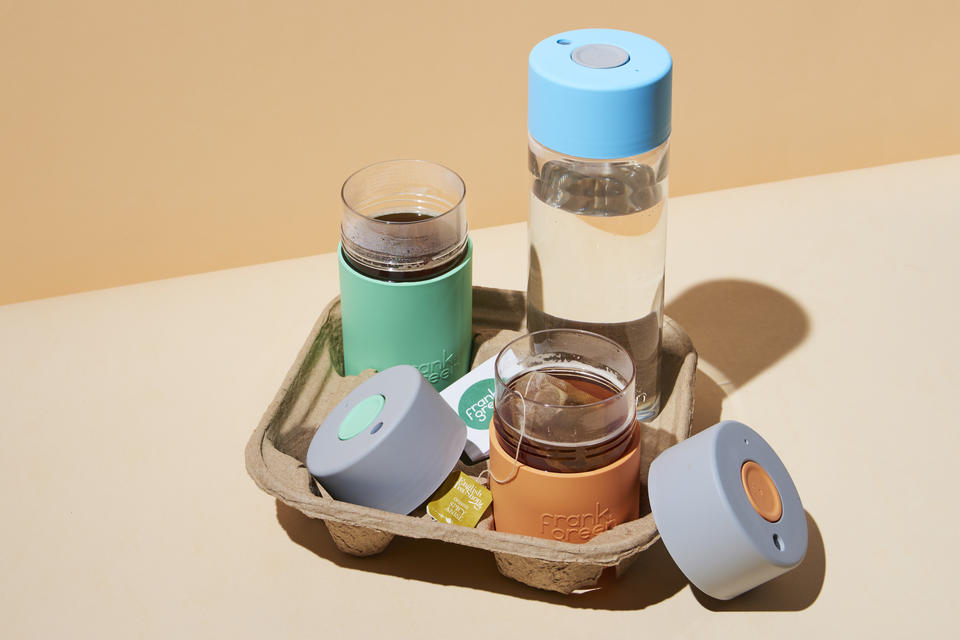
Image: Reusable Cups | By Nourished Life
Replacements
– Get an awesome vintage cup from an op-shop and keep in the car.
– Buy a fancy reusable cup.
– Save money. Many cafes offer discounts for BYO cups.
– Want all day hot coffee? Get a flask.
– DIY Mug – all you need is an old jar and wet-suite sleeve!
– Slow down, drink in, sit down, & enjoy!
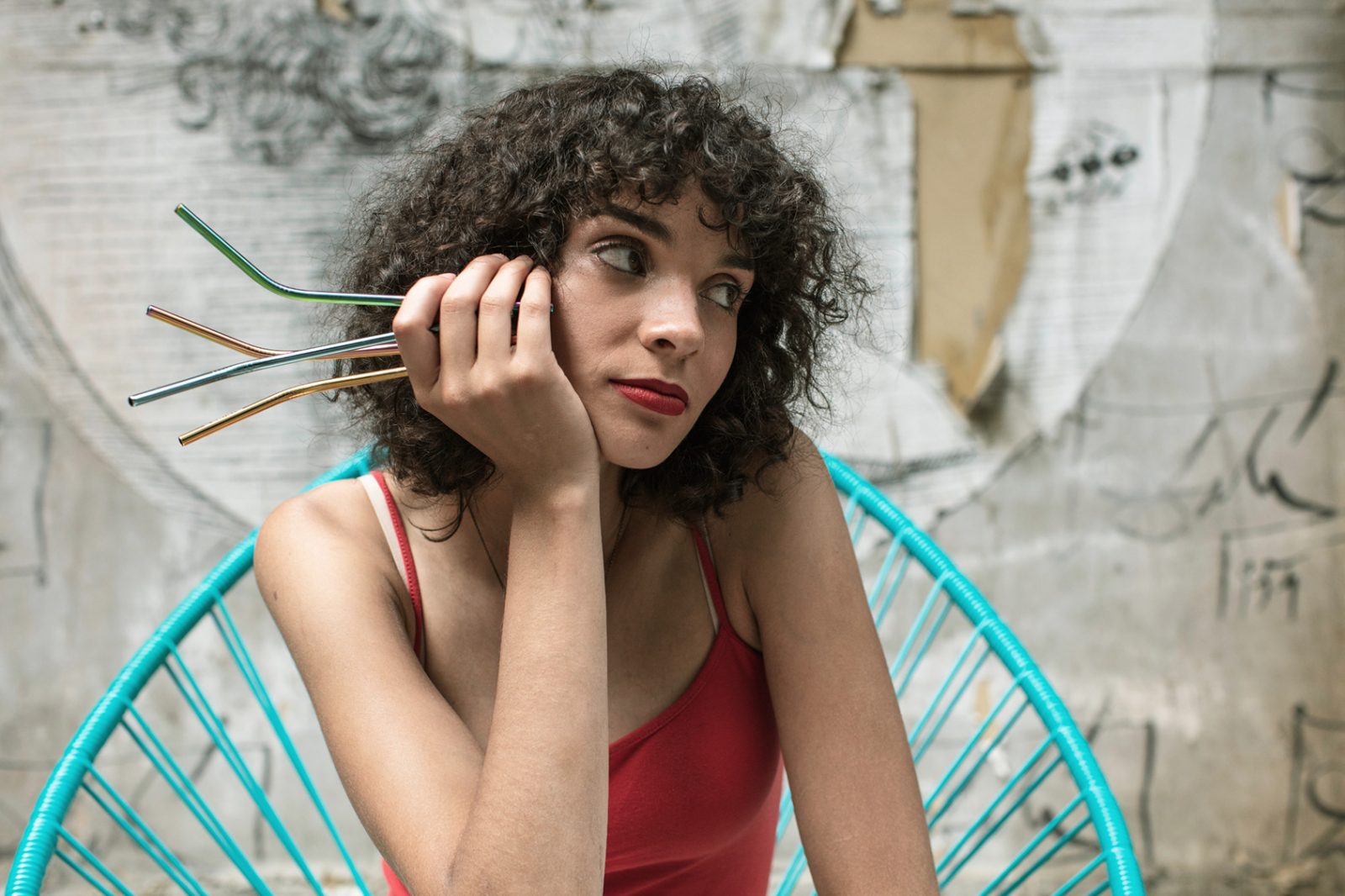
Image: Reusable Straws | By Swzle
And finally its the last straw, or is it? 500 million of these bad boys are used daily, just in the USA. If we laid those straws end-to-end, they would wrap around the earth more than 15 times- from just one country, in one day! Let’s kick this unnecessary habit, and loose the straw completely or try one of the below alternatives.
Strawesome Alternatives:
– Bamboo straws
– Paper straws
– Water bottles with built in straws
– Stainless steel straws
– Glass straws or fancy golden straws.
– Or simply just #stopsucking
Source: Grumpy Turtle Design – Plastic E-Book
Source: Plastic Free July
Source: WWF – Revealed: Plastic Ingestion by People
Source: Eco Warrior Princess
For further inspiration, check out our Sustainable Design Principles to see what we are doing.
We love sharing all the new and exciting things happening at Archiblox, so make sure you’re following us on
Instagram,
Facebook
and
Twitter,
or signed up to our
monthly newsletter, to ensure you don’t miss a thing.